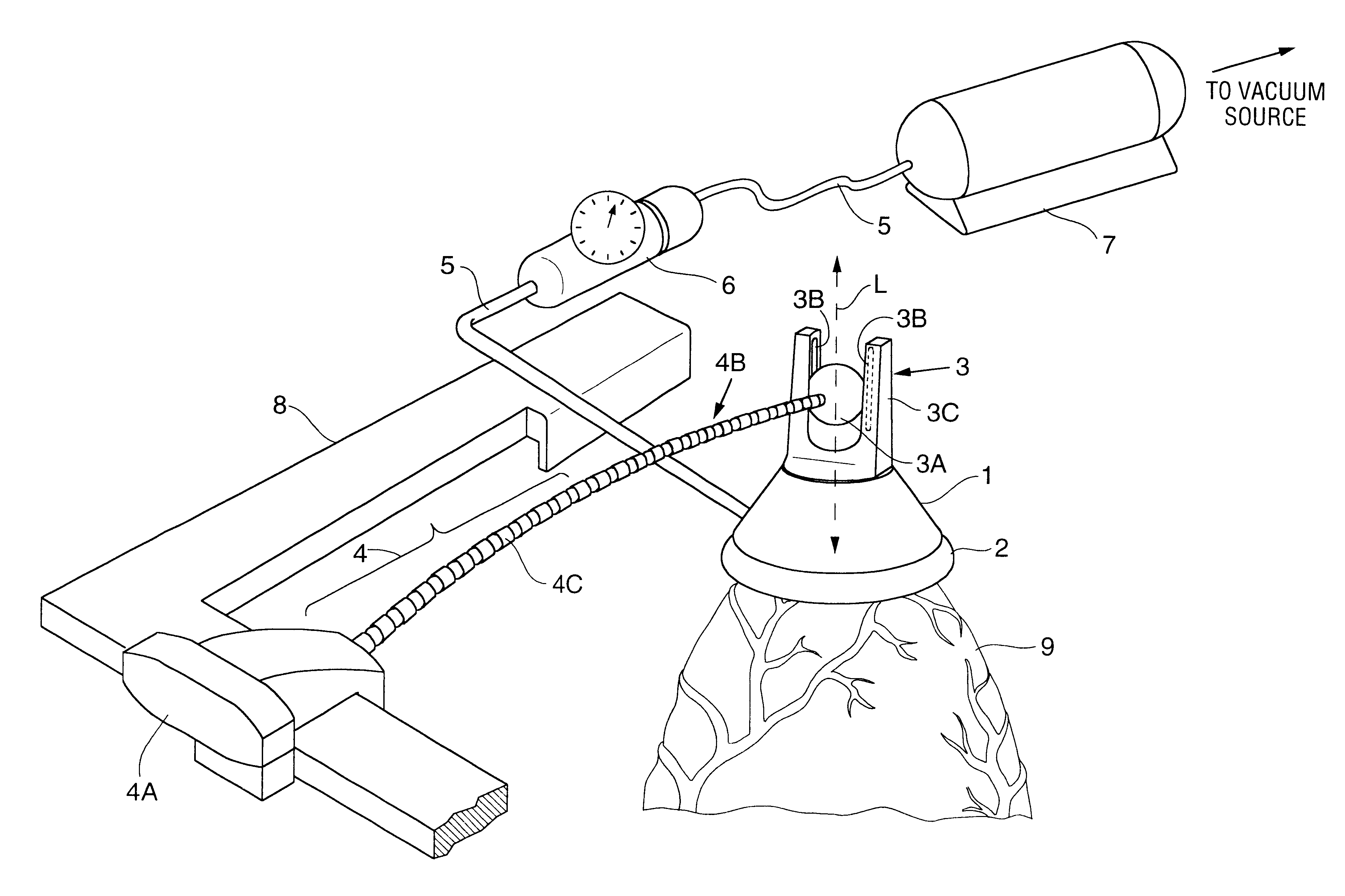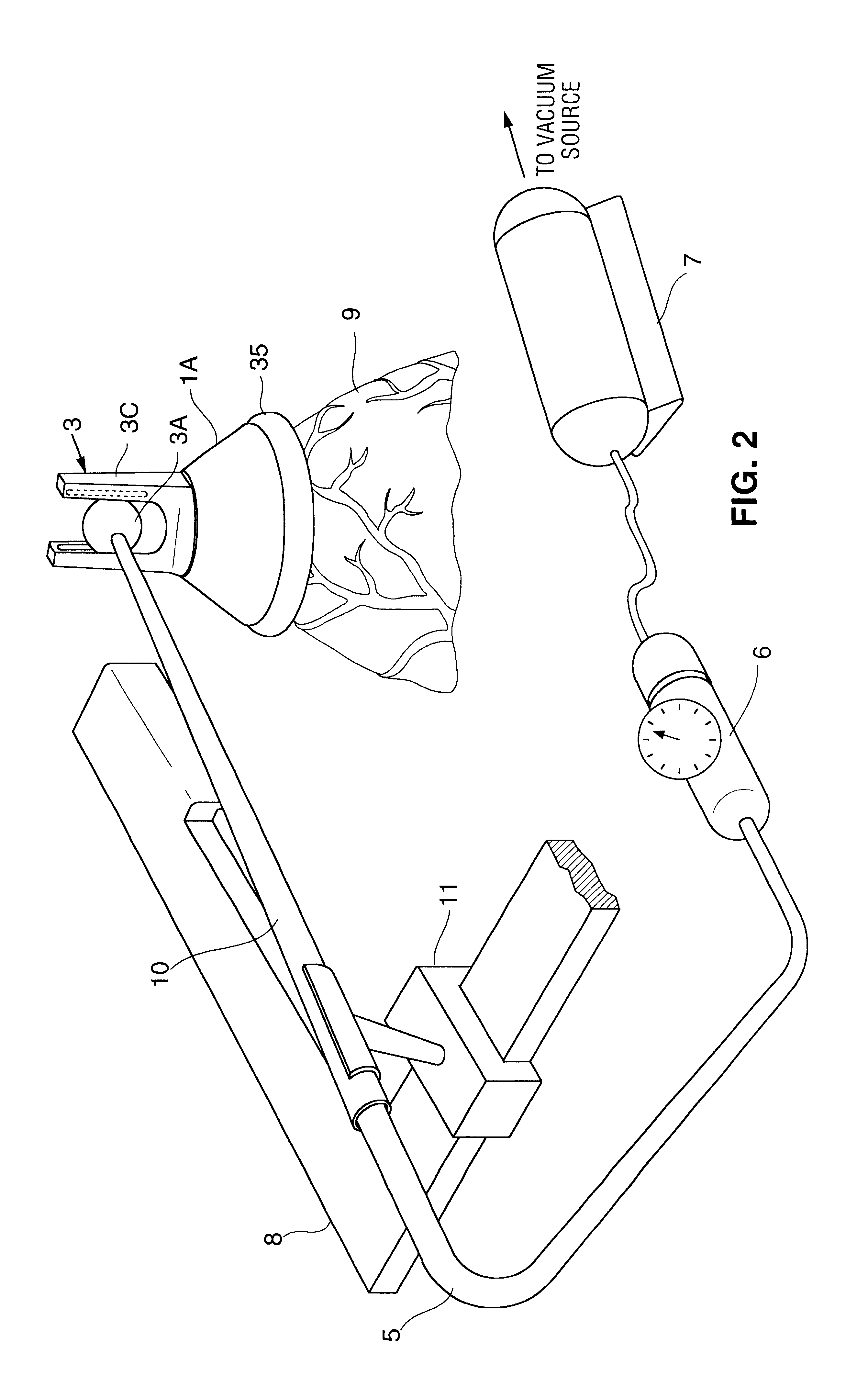Organ manipulator having suction member supported with freedom to move relative to its support
a technology of suction member and manipulator, which is applied in the field of organ manipulator, can solve the problems of insufficient space, heart failure, and difficulty in accessing cxa, rca and pda, and achieve the effects of reducing the amount of compressive deformation of the heart, facilitating oxygenation during surgery, and not compromising hemodynamic function
- Summary
- Abstract
- Description
- Claims
- Application Information
AI Technical Summary
Benefits of technology
Problems solved by technology
Method used
Image
Examples
Embodiment Construction
[0069]Throughout this disclosure, including in the claims, the expression “compliant joint” is used in a broad sense to denote any mechanical coupling capable of bearing the load of the inventive suction member (and the organ attached by suction to the suction member) while allowing the suction member (and organ) freedom to move in the described manner. The compliant joint can be implemented in any of a wide variety of ways, including (but not limited to) a sliding ball joint, a hinged joint, a pin which slides in a slot, a universal joint, or a spring assembly in which the spring constant is determined by a bellows, piston, metal spring, or some other compliant element).
[0070]A first preferred embodiment of the invention will be described with reference to FIG. 1.
[0071]The FIG. 1 embodiment is designed to retract heart 9 (by exerting suction) to a position suitable for performing surgery thereon, and to retain heart 9 in the retracted position (by continued exertion of suction ther...
PUM
 Login to View More
Login to View More Abstract
Description
Claims
Application Information
 Login to View More
Login to View More - R&D
- Intellectual Property
- Life Sciences
- Materials
- Tech Scout
- Unparalleled Data Quality
- Higher Quality Content
- 60% Fewer Hallucinations
Browse by: Latest US Patents, China's latest patents, Technical Efficacy Thesaurus, Application Domain, Technology Topic, Popular Technical Reports.
© 2025 PatSnap. All rights reserved.Legal|Privacy policy|Modern Slavery Act Transparency Statement|Sitemap|About US| Contact US: help@patsnap.com



